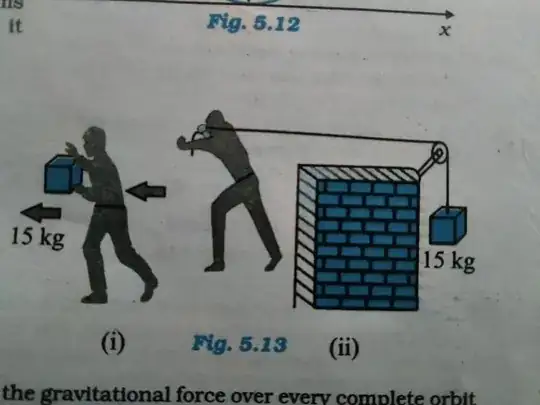"In figure (i) the man walks 2m carrying a mass of 15kg on his hands. In figure (ii) he walks the same distance pulling the rope behind him. The rope goes over a pully and a mass of 15kg hangs at its other end. In which case is the work done greater?"
Answers to this question on the internet say that since in figure (i) he applies force upward to lift the box up, and pushes the block forward, force is perpendicular to displacement and he does zero work. But does he not also apply force in the forward direction to push the box? Why do we neglect that force? What is the actual work done by man(i) on the box and how much is it?
